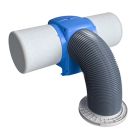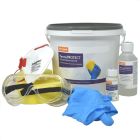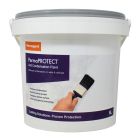Help & Advice Articles, Videos and How-to-Guides
Filter Articles
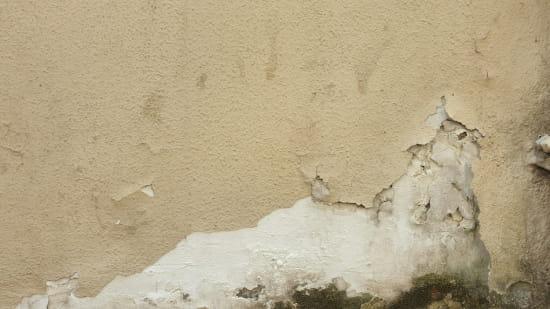
How to Get Rid of Mould in Your Bedroom
Living with mould in your bedroom is deeply unpleasant. It looks and smells bad, but can also cause damage to your fixtures and fittings. Spending long periods of time exposed to mould spores while sleeping also has the potential to exacerbate and even cause health problems.
If you have mould in your bedroom, it’s important to deal with the underlying cause and get rid of it for good. As experts in mould removal, we explain how to remove it safely and stop it coming back.
What causes mould in bedrooms?
Mould grows due to the presence of moisture. Excess moisture can be found in the bedroom due to condensation, as well as building faults such as leaking pipes or leaks from the roof or windows. These things can contribute to mould growth on their own or in combination.
Bedrooms are particularly prone to condensation. This is because water vapour is expelled in your breath as you sleep. If you have inadequate ventilation, this becomes trapped and settles as condensation on cold surfaces like windows and external walls. This dampness creates the conditions that lead to mould growth.
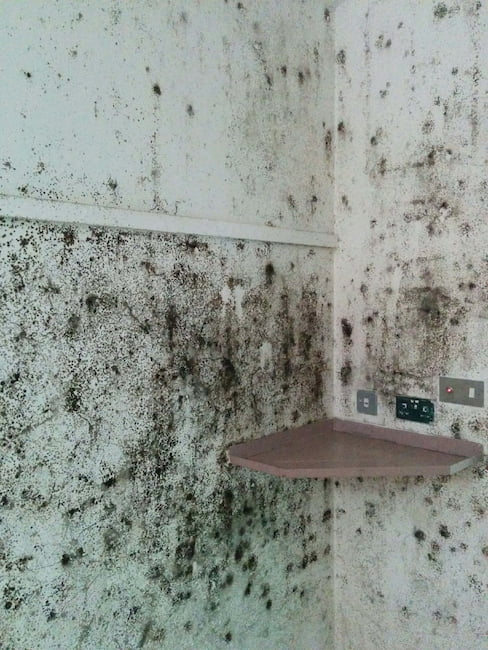
Dangers of mould in the bedroom
Mould in your bedroom can cause a range of problems. As mould spreads, it can cause damage to fixtures and fittings in your room. Soft furnishings, furniture and bedding can become damp and saturated with mould. Wallpaper can start to peel and become discoloured and stained. If you find mould inside your wardrobe, it can spread to your clothes. If it’s left untreated, it can start to cause structural damage, with plaster flaking and crumbling and wood rotting.
Even more concerning are the potential health problems that can be caused by the presence of mould in your bedroom.
What happens if you sleep with mould in your room?
Because of the length of time you spend exposed to mould overnight, it increases the potential to affect your health - particularly if you have an allergy to mould.
Mould generally affects the lungs and airways, but can also affect the eyes and skin. Damp and mould have the potential to cause health problems in anyone, but if you have an underlying condition, the effects can be serious. Recently, there have been some high-profile, tragic cases of people who have lost their lives due to exposure to mould.
Dealing with the presence of mould in your bedroom should be a priority, and you should rectify the underlying issues that caused the mould to appear and remove any existing mould as soon as you can.
How to stop mould in your bedroom
The first step to stopping mould in your bedroom is identifying the source. Is it caused by excess condensation or a structural issue (penetrating damp) causing water to leak into the room? Roof issues and faulty gutters are common causes of penetrating damp.
For more information on identifying and treating the causes of damp, see our guide.
It's crucial to resolve the underlying cause. If you don’t, even if you remove the mould, it will come back due to the excess moisture. We look at removing bedroom mould in some common scenarios in more detail below.
How to get rid of mould on walls in the bedroom
Mould on your bedroom walls could be caused by a structural issue, such as a leak, or condensation. As mentioned above, it’s important to uncover the root cause before treating the mould.
If it’s a structural issue, make sure to get this resolved. If you’ve identified the cause is condensation, there are a few options available.
- PermaPROTECT Anti Condensation Paint - This raises the dew point of the wall which means it takes up to 60% longer for condensation to form.
- Positive Input Ventilation (PIV) units - These are normally mounted in your loft space and replace humid internal air with fresh air from outside. If you live in a flat or property without loft space, we have wall-mounted units that are designed to function quietly.
Read our guide for more information about how to get rid of condensation.
Once you’ve fixed the underlying cause, you can use our PermaPROTECT Mould Remover Kit to kill and remove mould spores. The kit contains a fungicidal wash that removes the mould and an additive you can add when repainting the area that will stop black mould from coming back.
How to get rid of mould on the ceiling in your bedroom
Mould on the ceiling could be an indication of a leaking pipe or roof issue above your ceiling. It could also be caused by humidity and condensation. Once any leaks have been fixed or you’ve improved ventilation in your bedroom, you can treat it in the same way as removing mould from walls that we’ve covered above.
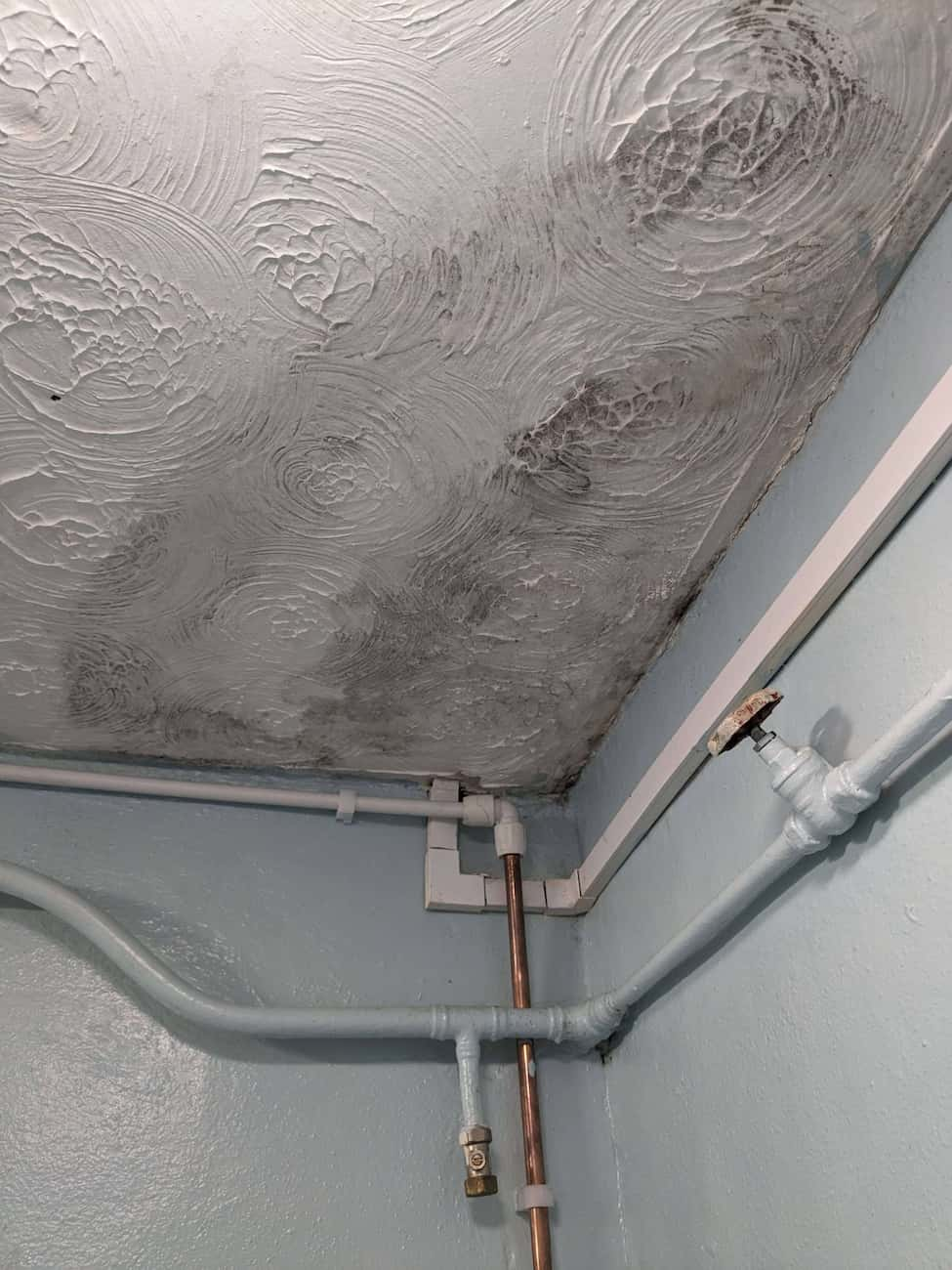
How to get rid of mould around windows in your bedroom
If you have mould specifically around the windows in your bedroom. You probably have a cold bridging issue. This is where a cold area meets a warmer one. This might be because your windows aren’t well-insulated or haven’t been sealed properly.
Moisture in the air condenses on cold impermeable surfaces. Windows are the perfect candidate in bedrooms. This excess moisture on and around your windows provides the perfect environment for mould growth.
As well as fixing any issues with your windows, you can help by increasing ventilation to reduce the amount of moisture that’s able to condense around your windows - leading to mould. PIV can be an effective way to reduce the level of moisture-laden air in your home, which is what settles as condensation. This is just one potential solution for condensation, read our guide for more information about all the available window condensation options.
How to prevent mould under your mattress
Mould on your bed or mattress will be caused by excess moisture in the room and a lack of airflow. Increasing ventilation, cooling the room to avoid sweating on the mattress and airing the bed regularly will all help prevent mould under the mattress. You should also avoid drying clothes in your bedroom as this will increase the moisture in the air in the room.
Bed frames without any ventilation will also make mould more likely. Box frames, futons or mattresses directly on the ground can all prevent moisture from escaping, leading to mould appearing underneath. If you have mould on bed sheets or bedding, make sure that you wash them thoroughly before using them again.
Insulating internal solid walls in your bedroom
Solid walls can be more prone to damp problems than cavity walls. As they have no insulation, they’re usually colder and are more likely to be affected by condensation. Penetrating damp is also more common, as moisture can travel through the substrate, where it usually cannot bridge the gap in a cavity wall.
ISO-Therm is an internal wall insulation that can be applied to solid walls to prevent damp and mould issues Installation is easy and non-disruptive. It can be cut to size and then applied directly to plastered walls. Once installed, the wall will be protected from damp, mould and salt transference, and its energy efficiency will be improved.
How to prevent mould in a built-in wardrobe
There are several things that could be causing mould in a built-in wardrobe.
- If there are pipes running through your built-in wardrobe, excess damp could be caused by a fault.
- Improve air flow by opening doors and windows in the room to let air circulate and humid air escape.
- Ensure clothes are fully dry before hanging them.
- Think about installing a condensation control vent. This is an easy, maintenance-free way to reduce condensation in a localised area.
Can you sleep with a dehumidifier on?
If you have an issue with humidity in your bedroom, a dehumidifier can be an effective way to trap moisture in the air. It’s safe to sleep with a dehumidifier on. However, you should aim for the humidity to be around 30-40%, any lower and the air may become too dry.
However, a more effective, permanent solution could be Positive Input Ventilation (PIV).
How to get rid of mould mites in the bedroom
Mould mites are small arthropods that eat mould and fungi. They inhabit damp, humid spaces, and though they’re not harmful to humans, they’re an indication that you have a damp problem that you need to deal with.
Start by assessing the area where you find them. What’s the cause of the damp? As we’ve discussed, you need to fix the issue. If the cause is left untreated, the mites are likely to come back even if you remove them.
Once you’ve fixed the issue, remove the mould using PermaPROTECT Mould Remover and reduce the levels of condensation. Vacuuming and cleaning the area where the mites were present is normally enough to eradicate an infestation.
How to stop mould in bedroom in winter
As the weather changes, particularly in colder months, it can be especially difficult to prevent damp and mould in winter. As we’ve already discussed, make sure there’s no avoidable reason for the presence of damp. Then it’s a case of ensuring adequate ventilation and making sure your bedroom is adequately heated. A regular heating schedule will help reduce condensation and moisture in your bedroom.
Permagard: mould removal experts
We have over thirty years of experience in damp proofing, condensation control and mould removal. We can supply everything you need to remove mould from your bedroom and ensure it doesn’t come back.
- PermaPROTECT Mould Remover Kit
- PermaPROTECT Anti Condensation Paint
- Nuaire Drimaster Eco LC with Loft Control
If you have any questions about getting rid of mould in your bedroom, get in touch with our friendly team by calling 0117 982 3282 or email us at [email protected].

